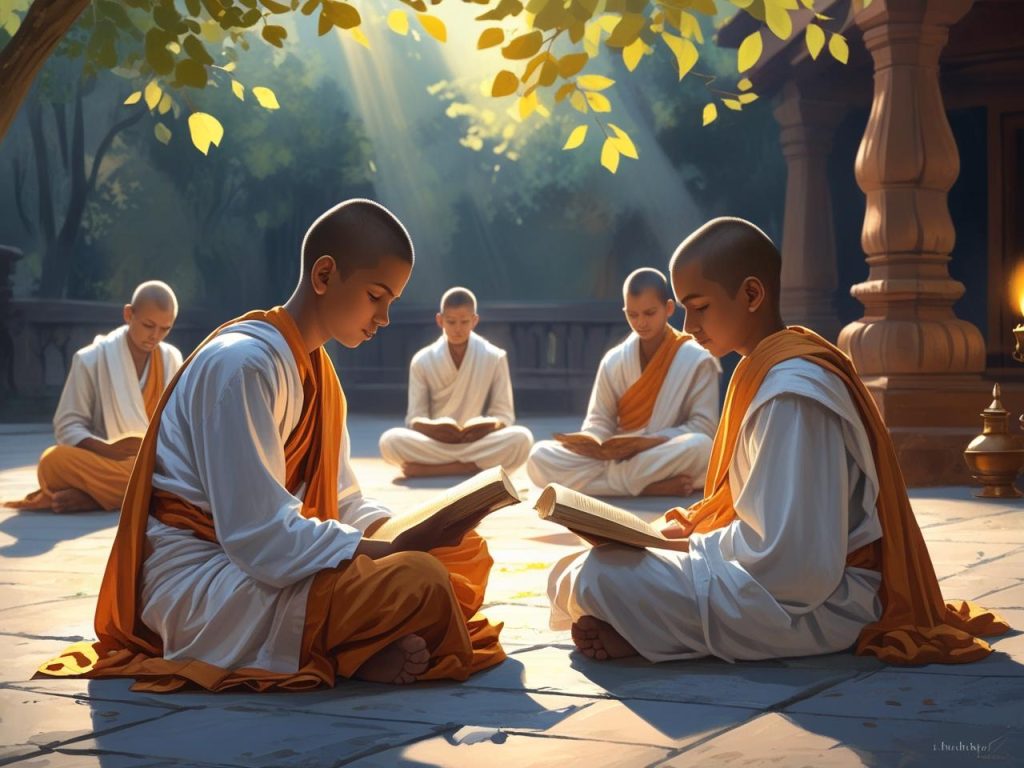About Us
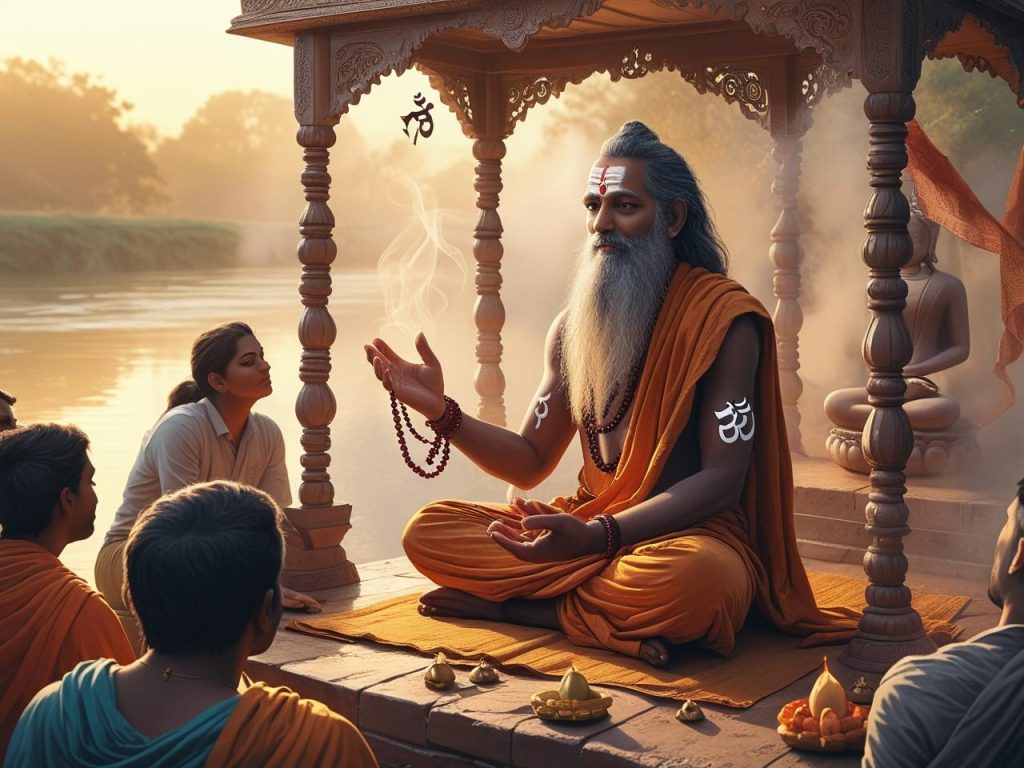

History of Digambar Akhara
Ancient Origins
The roots of Digambar Akhara stretch deep into the spiritual soil of ancient India, founded on the principles of sanatana dharma, renunciation (sannyasa), and Shaivite devotion. Though its precise origins are cloaked in antiquity, oral traditions and scriptural references suggest that the spiritual essence of the Akhara existed long before it took formal shape, carried forward by forest-dwelling sages, tapasvis, and yogis who lived beyond the bounds of society.
The name “Digambar”, meaning “clothed in the directions,” reflects the core ideal of the Akhara: complete detachment from material life and total immersion in divine consciousness. The Digambar sadhus, especially the Nagas, are symbols of this ideal — living embodiments of freedom, courage, and inner discipline.
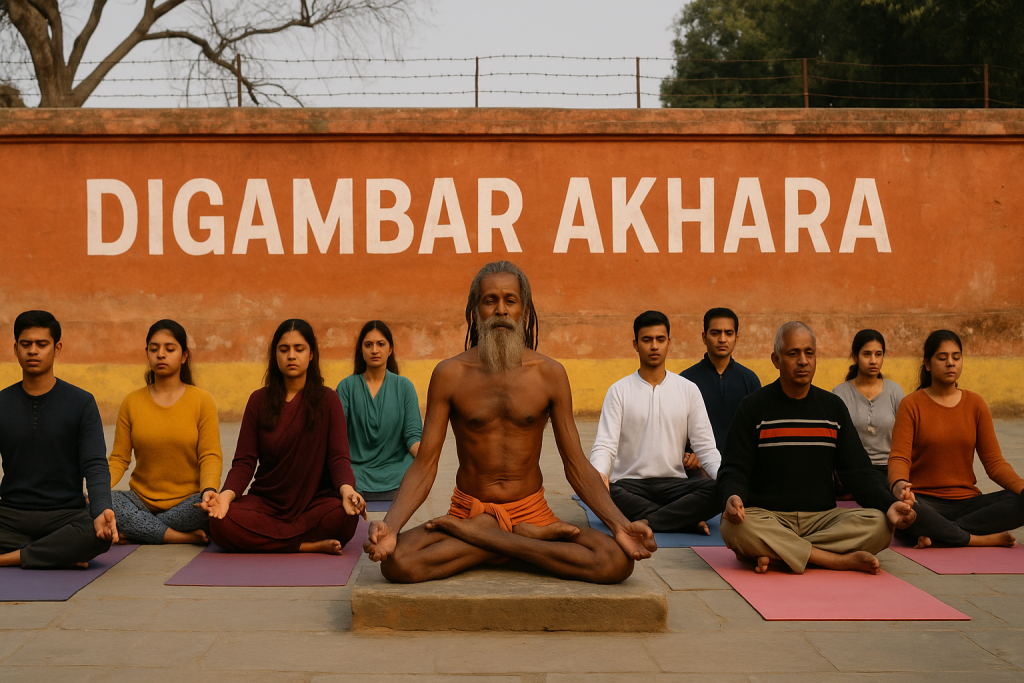
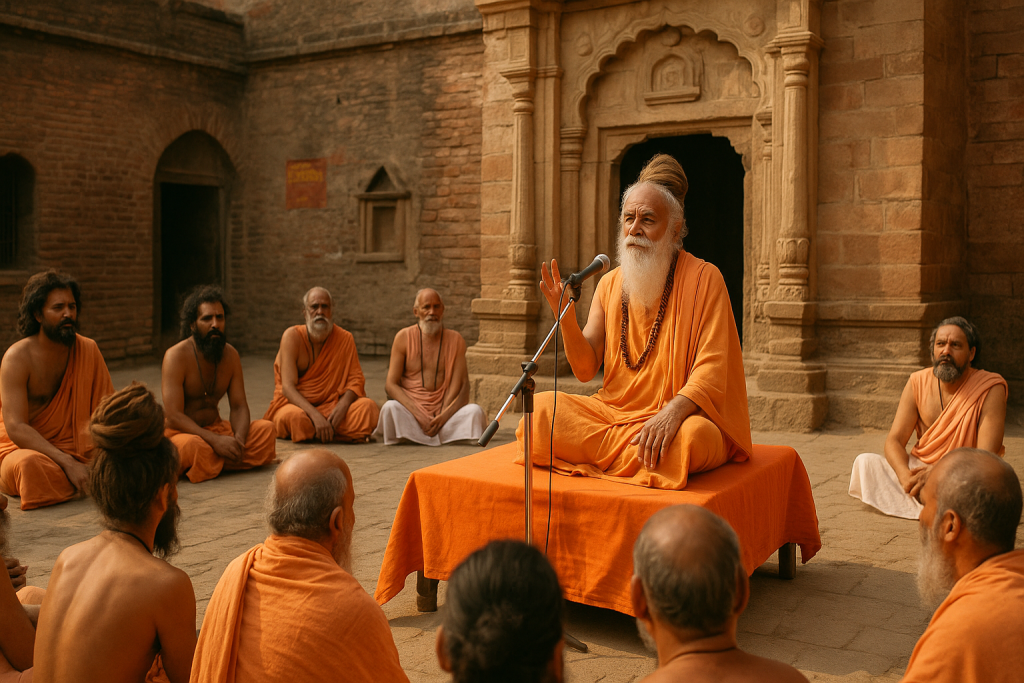
Founding and Lineage
The Digambar Akhara traces its spiritual lineage to the ancient rishis of Bharat, whose renunciate traditions were later formally organized in the 8th century CE by Jagadguru Adi Shankaracharya under the Dashanami Sampradaya. As a Shaivite order rooted in Advaita Vedanta, the Akhara emphasizes deep tapasya (austerity), vairagya (detachment), and guru-shishya parampara, where spiritual knowledge is transmitted directly from enlightened master to disciple. Its name, “Digambar” — meaning “clothed in the directions” — reflects the ideal of total renunciation embodied by the Naga Sadhus, the Akhara’s warrior-ascetics known for their fierce devotion, spiritual discipline, and fearlessness. With an unbroken lineage of saints and Mahamandaleshwars, Digambar Akhara continues to uphold and protect the eternal principles of Sanatan Dharma, combining scriptural wisdom, yogic mastery, and dharmic service through every generation.
Guru Parampara
The Guru Parampara of Digambar Akhara is an unbroken spiritual lineage that begins with the ancient rishis and flows through Adi Shankaracharya, enlightened yogis, and realized Mahamandaleshwars. Passed from guru to disciple, this sacred tradition preserves not only scriptural wisdom but the living flame of self-realization — guiding each seeker from ignorance to liberation.

Adi Guru Bhagwan Shiva
The primordial yogi and eternal source of spiritual knowledge. All Shaiva and yogic traditions, including Digambar Akhara, trace their spiritual origin to Lord Shiva — the first Guru, the master of meditation, renunciation, and liberation.
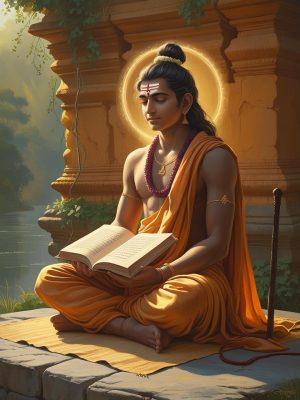
Jagadguru Adi Shankaracharya
Organizer of the Dashanami Sampradaya and the Akhara tradition. He re-established Vedic dharma, systematized Advaita Vedanta, and institutionalized monastic orders like Digambar Akhara to protect and propagate the spiritual path.

Swami Shri Anantananda Ji
A key figure in reviving Shaivite asceticism and the Naga tradition. Believed to be among the early post-Shankara torchbearers of the Akhara, he laid the foundation for the warrior ascetic path upheld by Digambar saints.
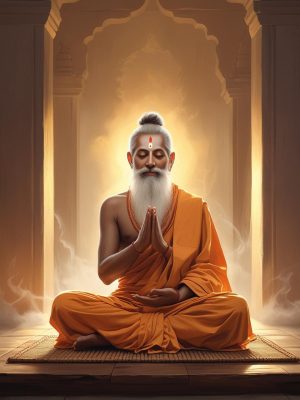
Mahamandaleshwar Shri Swami Ji Maharaj
Living representative of the Akhara’s spiritual authority and discipline. A present-day Mahamandaleshwar who guides initiates, oversees rituals, and carries forward the Akhara’s dharmic mission with purity, wisdom, and yogic power.
Spiritual Mission & Vision of Digambar Akhara
Spiritual Mission
The mission of Digambar Akhara is to uphold and spread the eternal truths of Sanatan Dharma through the paths of renunciation (sannyasa), Vedantic wisdom, and Shaivite devotion. Guided by the sacred principles of non-attachment, self-realization, and spiritual discipline, the Akhara trains ascetics, protects sacred traditions, and offers the light of spiritual knowledge to all who seek liberation.
Through its sadhus, Mahamandaleshwars, and Guru Parampara, the Akhara serves as a living embodiment of Bharatiya spiritual heritage, striving to protect dharma during times of chaos and guide society toward truth, compassion, and inner peace.
Spiritual Vision
To keep alive the sacred fire of tapasya, yoga, and dharma in every generation — cultivating awakened souls who embody fearlessness, purity, and wisdom.
To remain a beacon of spiritual strength for humanity, standing firm in timeless values while compassionately guiding seekers in a changing world.
To carry forward the essence of Digambar renunciation — where freedom from all bondage leads to union with the Divine.
Organizational Structure
The organizational structure of Digambar Akhara is rooted in spiritual hierarchy and tradition. At the top stand the Mahamandaleshwars, followed by Mandaleshwars, Acharyas, and senior sadhus, who guide and manage the Akhara’s religious and administrative responsibilities. The Naga Sadhus, known for their fierce renunciation and yogic discipline, form the core spiritual force, while brahmacharis and disciples undergo training under their guidance. This structure ensures the Akhara functions with spiritual integrity, discipline, and continuity of its ancient lineage.
Mahamandaleshwar
At the highest level of authority, the Mahamandaleshwar is a spiritually elevated leader entrusted with overseeing the Akhara’s religious, administrative, and cultural responsibilities. Elected by consensus among senior monks, Mahamandaleshwars represent the Akhara in major religious gatherings like the Kumbh Mela and provide guidance to the entire community of sadhus.

Mandaleshwar
Reporting to the Mahamandaleshwar, Mandaleshwars are respected senior monks responsible for managing regional branches or specific spiritual centers. They play a key role in training disciples, leading rituals, and organizing public events.
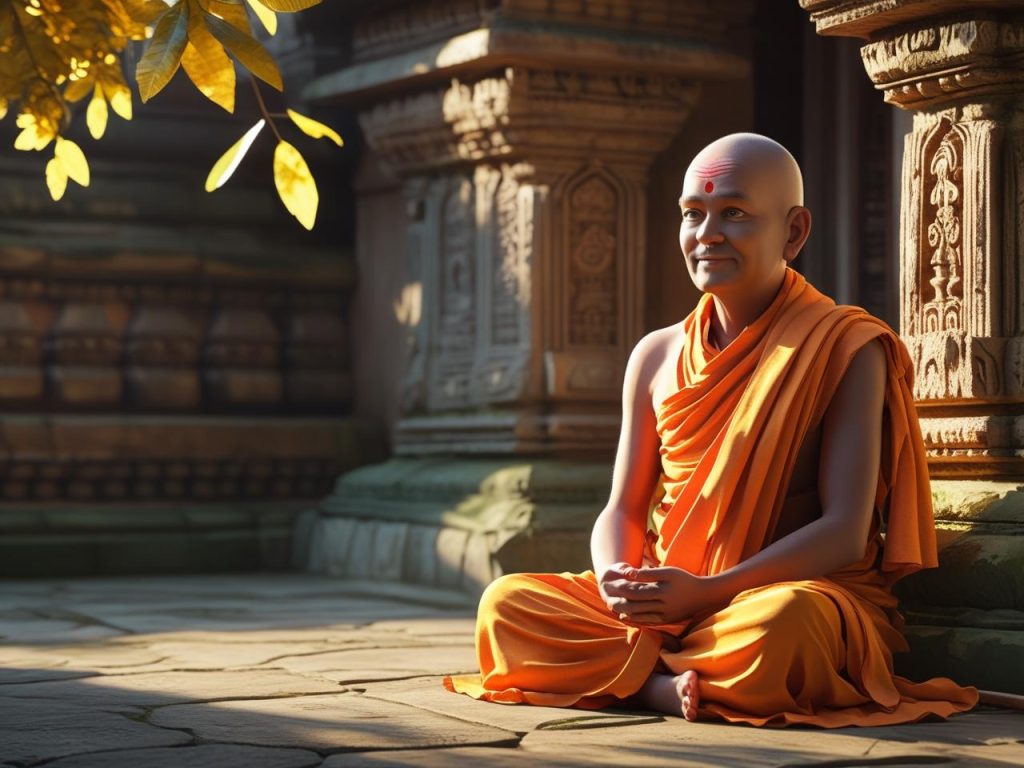
Acharyas and Gurus
These are spiritual teachers within the Akhara who guide disciples (shishyas) on their path of renunciation and inner realization. They uphold the Guru-Shishya Parampara, offering initiations (diksha) and daily instruction in Vedanta, yoga, and scriptural study.
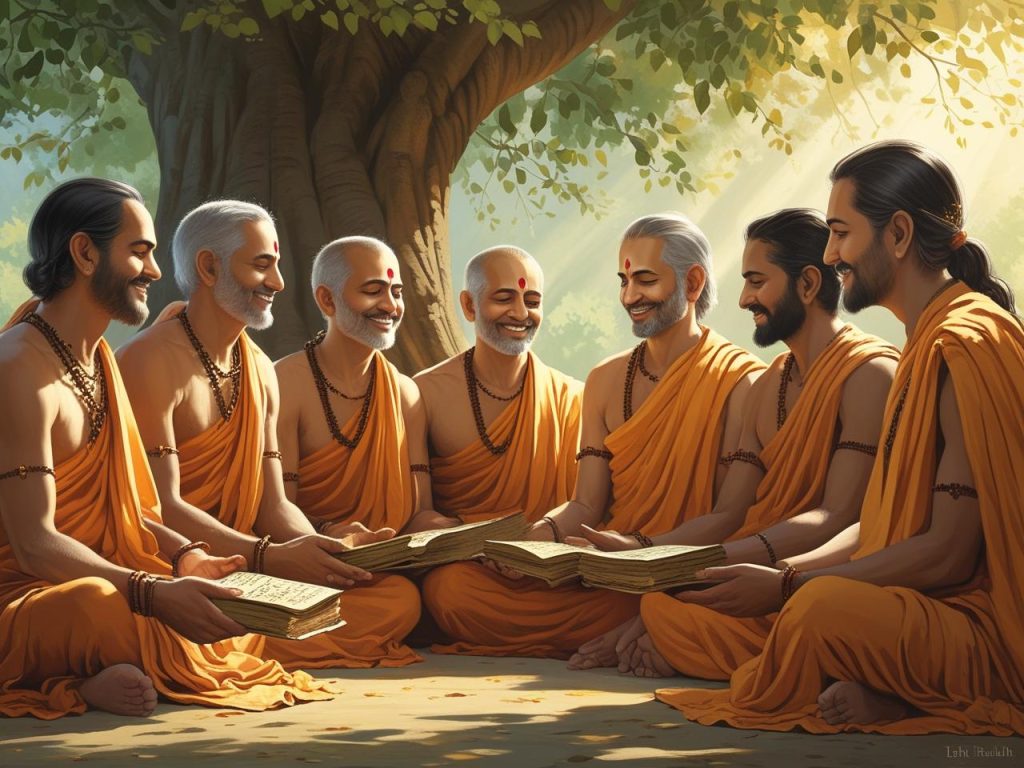
Naga Sadhus
Naga Sadhus form the core warrior-ascetic community of the Akhara. Renowned for their fearless renunciation, martial training, and yogic power, they represent the spiritual strength and protective aspect of the Akhara. Their initiation involves years of discipline and is a mark of total surrender to the divine path.
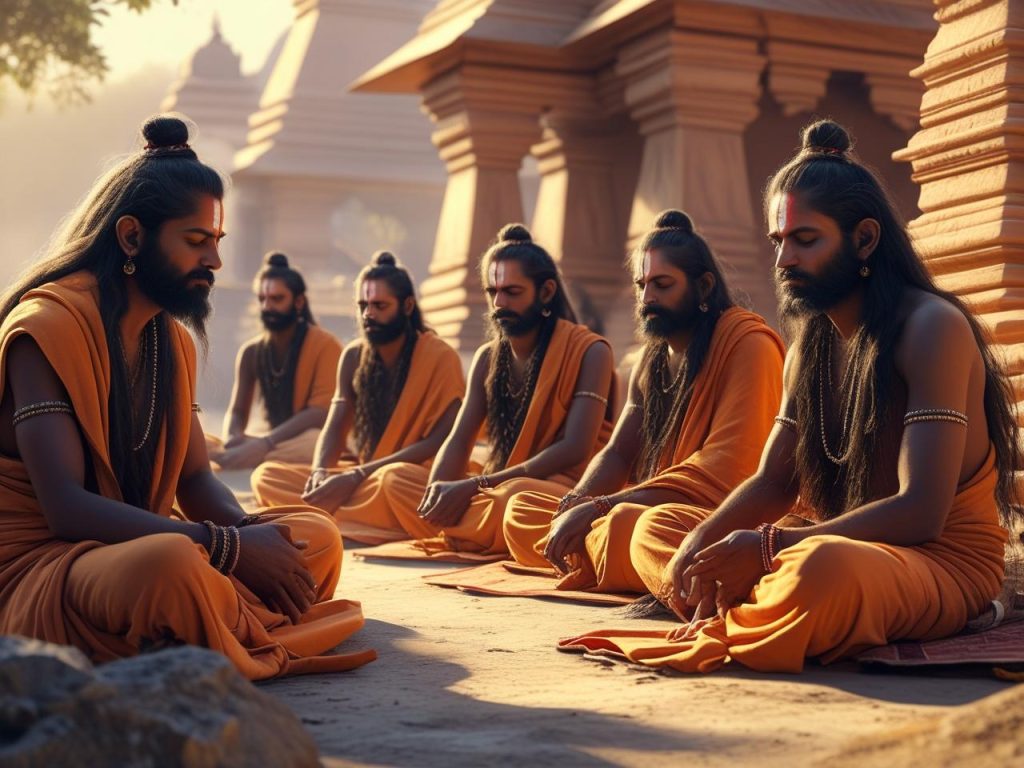
Brahmacharis and Disciples
These are novice seekers undergoing training before formal initiation. They live under the guidance of senior gurus and participate in seva (service), scriptural learning, and spiritual practices, preparing to enter deeper stages of renunciation.
